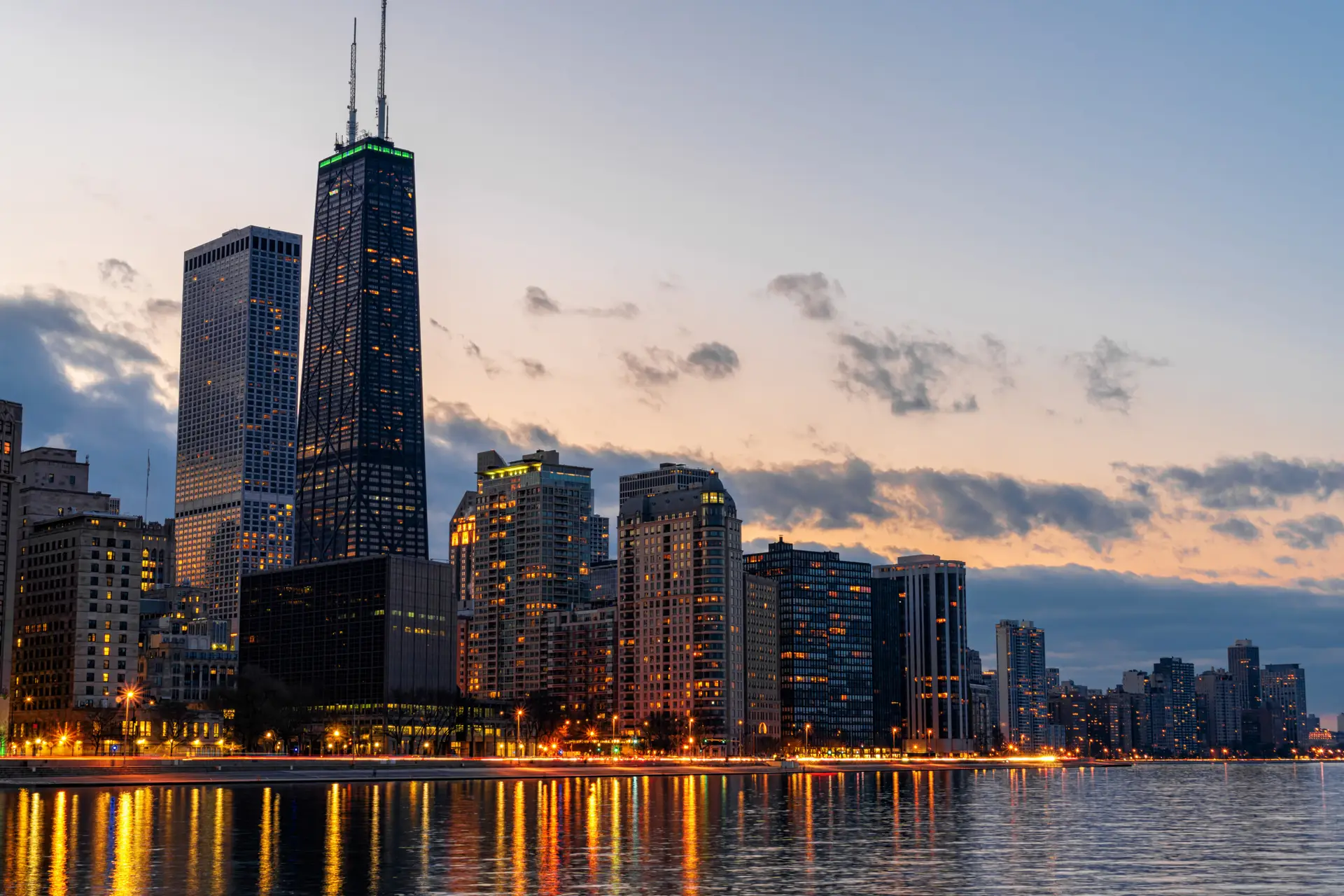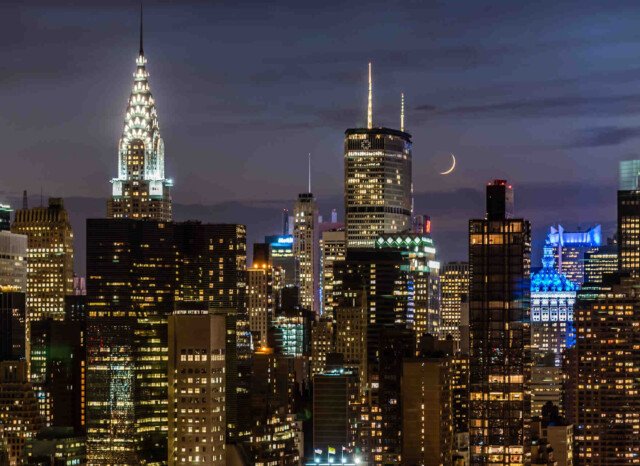No, Chicago isn’t a city in New York. In fact, it’s located about 790 miles west of New York City, in the state of Illinois.
Both cities have rich histories and cultures, each with their own unique landscapes and styles. Chicago is famous for its impressive skyline and vibrant music scene, while New York City is home to iconic landmarks like Times Square and Central Park.
People sometimes mix them up due to some cultural similarities, but they are distinct cities, shaped by different historical events.
If you’re curious about what makes each city special, there’s a lot more to discover about their unique features!
Key Takeaways
Sure! Here’s the modified text:
- Chicago is a unique city located in Illinois, roughly 790 miles west of New York City.
- Some people might confuse the two cities due to their cultural similarities and the vastness of the United States.
- New York City is famous for its high population density and cultural diversity, while Chicago is known for its more laid-back atmosphere.
- Both cities boast rich cultural scenes, but they each have distinct identities shaped by their own histories.
- When it comes to cuisine, Chicago is renowned for its deep-dish pizza, whereas New York City is celebrated for its bagels and a wide variety of food options.
If you have any more questions about either city, feel free to ask!
Geographic Locations of Both Cities
When I consider the geographic locations of both cities, it’s important to point out that Chicago isn’t in New York; it’s actually a major city in Illinois, situated about 790 miles to the west of New York City. This distance really emphasizes the unique urban environments that each city presents.
Chicago is celebrated for its impressive skyline and vast parks, which contribute to a culture rich in diversity and innovation. In contrast, New York City is known for its high density, which fuels its lively atmosphere. Each neighborhood in New York has its own unique character, creating a tapestry of experiences.
The differences between these two large cities are quite pronounced; Chicago’s more expansive layout gives it a relaxed vibe, while New York’s compactness generates a constant sense of urgency and energy.
Understanding where these cities are located is essential for anyone who enjoys exploring new places. Each city embodies a different aspect of American life, shaped by its geography. Choosing to visit either Chicago or New York offers an enriching experience that reflects the broader story of urban development in the United States.
Historical Context and Development
Both Chicago and New York City boast rich histories that significantly influence their identities, yet their developmental paths tell quite different stories.
It’s interesting to see how urban development in these two iconic cities unfolded, particularly regarding their economic growth.
New York City emerged as a crucial gateway for immigration and trade, quickly establishing itself as a financial powerhouse. The skyline dotted with tall skyscrapers is a testament to this rapid expansion, reflecting the diverse communities that have contributed to its growth. According to historical data, by the late 19th century, New York had become the largest city in the United States, a hub for finance, media, and culture, attracting millions of immigrants seeking opportunity.
On the flip side, Chicago’s narrative is deeply rooted in manufacturing and transportation, especially with the boom of the railroads in the 19th century. This strategic positioning allowed Chicago to flourish during the industrial era, becoming known as the “Windy City” and a central trading hub. Historical records suggest that by the early 20th century, it was the second-largest city in the U.S., heavily tied to its Midwestern character and industrial output.
As we delve into these trajectories, it’s evident that both cities encountered unique challenges and opportunities. Chicago’s urban development often showcased resilience in the face of disasters like the Great Chicago Fire of 1871, which ultimately led to innovative rebuilding efforts.
Meanwhile, New York’s growth has been marked by a relentless quest for global significance, facing challenges such as economic downturns and urban decay but emerging stronger each time.
Cultural Similarities and Differences
The distinct historical paths of Chicago and New York City have shaped their cultural landscapes in unique ways, reflecting their individual identities. While both cities are vibrant and alive with energy, their cultural expressions showcase some notable differences and similarities. Let’s dive into a few key aspects:
1. Art Scenes: Chicago is known for its impressive public art initiatives and street murals that bring color and life to its neighborhoods.
In contrast, New York City is home to some of the world’s most prestigious galleries and museums, including the Museum of Modern Art (MoMA) and The Metropolitan Museum of Art (the Met). This difference highlights how each city approaches art—Chicago leans towards community art, while New York focuses on high-profile exhibitions.
2. Culinary Traditions: When it comes to food, Chicago is famous for its deep-dish pizza and Chicago-style hot dogs, which have become iconic representations of the city’s culinary heritage.
On the other hand, New York City boasts its own culinary icons, such as bagels and a melting pot of diverse food options that reflect its multicultural population. This variety gives each city a distinctive flavor profile.
3. Music Genres: Chicago holds a significant place in music history as the birthplace of blues and house music, genres that have deeply influenced American music as a whole.
Meanwhile, New York has been a pivotal hub for jazz and hip-hop, nurturing these genres and contributing to their evolution. Both cities have rich musical legacies, but they each highlight different styles and cultural roots.
4. Architectural Styles: The architectural landscape of Chicago is marked by its innovative skyscrapers and the historic Chicago School, which focused on steel-frame construction and functional design.
In contrast, New York’s skyline features a blend of iconic structures like the Empire State Building, along with modern glass towers that showcase contemporary architectural trends. This architectural diversity tells the story of each city’s growth and aspirations.
Common Misconceptions Explained
Misunderstandings can often cloud the relationship between Chicago and New York City, leading some people to mistakenly believe that Chicago is part of New York. This misconception arises from a combination of cultural similarities, geographical confusion, and the fact that both cities are quite large and influential in the United States.
When people think of the bustling urban life, vibrant arts scenes, and diverse food offerings, they might inadvertently conflate the two cities, not realizing they each have their own unique histories and identities.
The confusion often intensifies due to media portrayals where both cities are frequently compared or mentioned in tandem. Movies, television shows, and articles often highlight their similarities, which can create the impression that these cities are interchangeable.
It’s important to understand that while they share certain traits—like diversity, cultural richness, and thriving urban environments—Chicago is very much an independent city with its own distinct character.
Additionally, historical events have shaped the narratives surrounding these cities. Events like the Great Chicago Fire of 1871 and the early development of New York City contribute to the rich tapestry of each city’s history.
Unique Features of Each City
What really distinguishes Chicago from New York City are the unique features that contribute to each city’s identity. As I dive into these differences, I can’t help but admire the distinct vibe each metropolis brings to the table.
Let’s highlight four notable aspects:
1. Architectural Styles: Chicago is famous for its diverse skyline, which includes iconic structures like the Willis Tower (formerly known as the Sears Tower) and a rich mix of modern and historic architecture.
New York, on the other hand, is celebrated for its towering skyscrapers, such as the Empire State Building and One World Trade Center, combined with classical designs that reflect its long history.
2. Culinary Scene: Chicago stands out for its deep-dish pizza, a local specialty that has become a culinary symbol of the city, along with a wide variety of ethnic cuisines reflecting its immigrant roots.
In contrast, New York is known for its bagels and a vibrant food truck scene that showcases the city’s melting pot culture, offering everything from street tacos to gourmet meals.
3. Public Spaces: Chicago features expansive parks like Grant Park, which provide tranquil retreats in the heart of the city.
New York’s Central Park, while also expansive, acts as an urban oasis that attracts millions of visitors seeking a breath of fresh air amidst the city’s hustle and bustle.
4. Cultural Institutions: The cultural landscape in Chicago is highlighted by impressive museums such as the Art Institute of Chicago, renowned for its collection of Impressionist and Post-Impressionist paintings.
Meanwhile, New York boasts iconic institutions like the Metropolitan Museum of Art, which houses a vast array of art from various cultures and time periods.
Both cities have their unique charm, and it’s these distinctive features that lend each its unmistakable character.
Frequently Asked Questions
What Is the Population of Chicago Compared to New York City?
I’ve delved into population trends and demographic differences, and it’s clear that Chicago’s population is significantly smaller than that of New York City. As of the latest estimates, New York City boasts a population of around 8.4 million people, while Chicago’s population is approximately 2.7 million. This difference means that while Chicago has a vibrant and diverse culture, the sheer size of New York City contributes to a unique urban experience that is quite different from that of Chicago. It’s fascinating to see how these population dynamics shape each city’s character!
How Far Apart Are Chicago and New York City?
Chicago and New York City are approximately 790 miles (about 1,270 kilometers) apart. When planning trips between these two bustling cities, the distance can really influence your travel choices. Whether you’re considering flying, which is the quickest option, or driving, which allows for a more scenic route, it’s good to keep that mileage in mind. Both cities have their unique vibes and attractions, so thinking about how you want to travel can help you make the most of your trip.
Which City Has a Larger Land Area, Chicago or New York?
When we look at the land area of these two major cities, Chicago covers approximately 234 square miles, whereas New York City is significantly larger at around 302 square miles. This difference in size is influenced by various geographic features, including lakes, rivers, and parks, which shape the landscapes of both cities. So, in terms of land area, New York City definitely has the upper hand!
What Are the Major Airports in Chicago and New York?
When it comes to major airports, Chicago is home to O’Hare International Airport and Midway International Airport, both of which are key hubs for domestic and international travel. O’Hare is particularly notable for being one of the busiest airports in the world, handling millions of passengers each year. On the other hand, New York has John F. Kennedy International Airport (JFK) and LaGuardia Airport (LGA), which serve as critical gateways for travelers heading to and from the city. JFK is known for its extensive international flight offerings, while LaGuardia primarily focuses on domestic flights. Each of these airports plays a significant role in connecting travelers to various destinations around the globe.
How Do Chicago and New York Rank in Terms of Cost of Living?
When I look at the cost of living between Chicago and New York, it’s clear that Chicago generally has more affordable housing prices compared to New York City. According to various studies and reports, including those from major media outlets and cost of living indexes, housing is one of the biggest factors that can influence overall living expenses. However, it’s important to note that other living costs, such as transportation, groceries, and healthcare, can vary significantly between the two cities. So, when considering a move or budgeting for living expenses, it’s really a good idea to analyze all these factors to see what fits your budget best.





